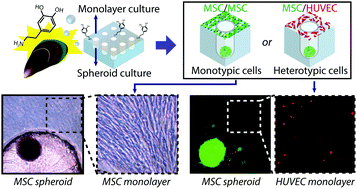
Cell cultures – Monolayers to spheroids
Cells have been cultured since the 1940s and are generally used to investigate cell biology and molecular mechanism. Cells are taken directly from a tissue and after suitable preparation, transferred into an artificial environment. Cultures are kept in special dishes placed in strictly controlled temperature, normally at 37 °C. Cells attach to the substrate on which they are cultivated and mainly grow in two dimensions as monolayers. This method of cell culturing is the most popular one because it is simple and convenient. However, forcing cells to grow in adherence on flat surfaces can change their metabolism and functioning (1,2).
Two-dimensional cell cultures
In two-dimensional cell cultures, the cell-cell and cell-extracellular matrix interactions, as well as the level of cellular responses, are limited. Moreover, cell culture environment can influence cell phenotype and hence affect cellular response to added substances. All cells in the body live in three-dimensional environment, which is crucial for their metabolism and growth. The phenotype and functions of each cell are highly dependent on their elaborated interactions with neighbouring cell, extracellular matrix, and proteins. Those interactions differ from 2D to 3D cultures and between cell layers in spheroids structures (3,4).
Three-dimensional cell cultures
Three-dimensional cultures more precisely mimic the natural cell microenvironment. The morphology and physiology of cells in 3D cultures differ from 2D cultures, showing responses that more likely correspond to in vivo behaviour. 3D cell cultures are widely used to investigate cancer cell behaviour, intracellular interactions, and cell differentiation and to evaluate drug toxicity and efficacy. Therefore, they can positively contribute to filling the gap between cell-based in vitro assays and the in vivo situation. It has been shown that 3D cell cultures exhibit increased level of tissue-specific markers and better retain tissue-specific functions as well as various gene expression profiles as compared to 2D cell cultures (5,6).
REFERENCES:
1. Goodman T.T., Ng C.P., Pun S.H. 3-D tissue culture systems for the evaluation and optimization of nanoparticle-based drug carriers. Bioconjug. Chem. 2008;19:1951–1959. doi: 10.1021/bc800233a.
2. Do Amaral J.B., Rezende-Teixeira P., Freitas V.M., Machado-Santelli G.M. MCF-7 cells as a three-dimensional model for the study of human breast cancer. Tissue Eng. Part C Methods. 2011;17:1097–1107. doi: 10.1089/ten.tec.2011.0260.
3. Andersen T., Auk-Emblem P., Dornish M. 3D cell culture in alginate hydrogels. Microarrays. 2015;4:133–161. doi: 10.3390/microarrays4020133.
4. Lee J., Lilly G.D., Doty R.C., Podsiadlo P., Kotov N.A. In vitro toxicity testing of nanoparticles in 3D cell culture. Small. 2009;5:1213–1221. doi: 10.1002/smll.200801788.
5. Edmondson R., Broglie J.J., Adcock A.F., Yang L.J. Three-dimensional cell culture systems and their applications in drug discovery and cell-based biosensors. Assay Drug Dev. Technol. 2014;12:207–218. doi: 10.1089/adt.2014.573.
6. Kitel R., Czarnecka J., Rusin A. Trójwymiarowe hodowle komórek—Zastosowania w badaniach podstawowych i inżynierii tkankowej. Post Biochem. 2013;59:305–314.



